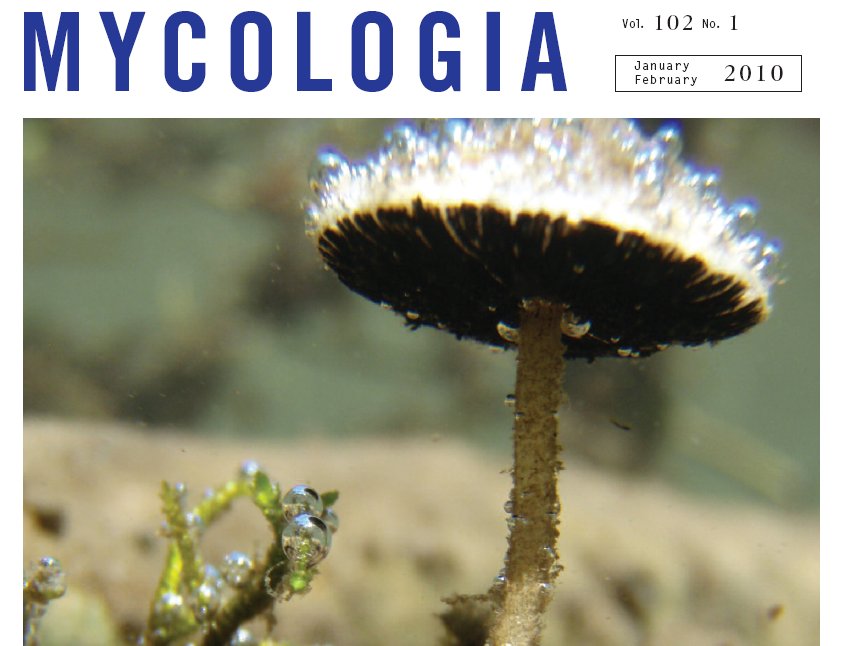Last week the International Institute for Species Exploration at Arizona State University released their list of the top 10 new species of 2010, which Nat Geo covered admirably here and is well worth a look. On that list was a mushroom I covered here last year, Psathyrella aquatica, the “Mushroom that Sleeps with the Fishes”.
What I did not know about then, and have just discovered, is that this mushroom doesn’t merely lounge around in quiet pools. It stands up to stiff currents, as seen in this amazing video I found at the ASU site.
Both the Nat Geo article and the ASU page contained some other gems. The caption to the glowing mushrooms in the Nat Geo article noted
San Francisco State University’s Dennis Desjardin and colleagues scouted for glow-in-the-dark mushrooms during new moons, in rain forests so dark the researchers often couldn’t see their hands in front of their faces, Desjardin told National Geographic News in 2009.
Ummm . . . have you seen many of the things that live in rainforests? Walking through them in pitch black sounds like a Herculean feat of will, and hands-down one of the most bad-*** things I have ever heard of any scientist doing (although the guy who set out to sample the stings of every venomous insect and rate them on a scale of pain comes close). I give a Pseudopod Salute to these guys for courage in the line of duty. And it seems to have paid off, too.
But “when you look down at the ground, it’s like looking up at the sky,” Desjardin said. “Every little ‘star’ was a little mushroom—it was just fantastic.”
WOW. Witnessing for the first time a few hours of profound biological beauty sounds like it could well make up for the seriously high sphincter factor of this study. Like when Edith Widder turned off the dive lights on her autonomous diving suit 880 feet below the Santa Barbara Channel, or when I jumped into the North Pacific at night in shark-infested waters to see the nightly ascent of the bizarre pelagic biota. Sometimes, the payoff is worth the bone-quaking fear.
In the ASU description of the dentally-well-endowed but reproductively less blessed T. rex leech, known for teeth “that the leech uses to saw into the tissues of mammals’ orifices, including eyes, urethras, rectums, and vaginas,” (oh dear LORD) according to Nat Geo, was casually dropped this detail
This T. rex leech was discovered feeding from the nasal mucous membrane of a little girl in Perú.
Eeeeeeeeeee! Nat Geo did not mention it was a human parasite too!
And finally, in the caption for the Darwin’s Bark Spider at ASU, hidden amongst some other more or less routine description of a spider that spins gigantic webs was this
This orb-weaving spider builds the largest orb-style webs that are known to science. Webs of this species have been found spanning rivers, streams and lakes with “bridgelines” reaching up to 25m in length and total web size reaching up to 2.8m2. The silk spun by these spiders has an average toughness of 250MJ/m3 with the highest measured at 520MJ/ m3. This makes it, “the toughest biological material ever studied, over ten times stronger than a similarly-sized piece of Kevlar” and more than two times stronger than any other known spider silk. The unusual behaviors of this new species will allow us to understand size dimorphism, mate guarding, and self castration (among others).
Wait . . . what was that last one?


